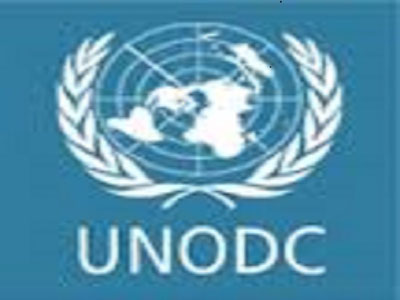A new era of escalating global instability is intensifying the world drug problem, empowering organised crime syndicates and driving drug use to unprecedented levels, the UN Office on Drugs and Crime (UNODC) has warned in its freshly launched World Drug Report 2025.
The report highlights how ongoing crises are compounding the already severe social, economic, and security costs associated with the illicit drug trade and consumption.
The UNODC Executive Director, Ghada Waly, underscored the adaptive nature of drug trafficking groups, stating, “This edition of the World Drug Report shows that organised drug trafficking groups continue to adapt, exploit global crises, and target vulnerable populations.”
She emphasised the critical need for investment in prevention strategies and addressing the root causes of the drug trade across every segment of the illicit supply chain. Waly advocated for strengthened responses through leveraging technology, bolstering cross-border cooperation, providing alternative livelihoods, and pursuing judicial actions against key actors driving these networks.
“Through a comprehensive, coordinated approach, we can dismantle criminal organisations, bolster global security, and protect our communities,” she added.
The report reveals a significant surge in global drug use, with 316 million people (six per cent of the population aged 15-64) having used drugs (excluding alcohol and tobacco) in 2023. This marks an increase from 5.2 per cent in 2013.
Cannabis remains the most widely consumed drug globally, with 244 million users, followed by opioids (61 million), amphetamines (30.7 million), cocaine (25 million), and “ecstasy” (21 million).
Domestically, the report paints a grim picture for Nigeria, where cannabis continues to be the most prevalent illicit substance. Worryingly, one in three cannabis users in Nigeria report needing treatment or counselling, a statistic that underscores a significant gap in available health services and support within the nation.
The UNODC Country Office Representative for Nigeria, Cheikh Toure, highlighted the multi-faceted impact, noting, “This is not just a health crisis — it is a development, security, and peacebuilding concern.”
Nigeria’s national drug use prevalence stands at 14.4 per cent, nearly triple the global average, with over three million Nigerians grappling with drug use disorders. Compounding this challenge is a concerning 9.2 per cent HIV prevalence among people who inject drugs, coupled with limited access to evidence-based treatment services.
Across Africa, only 3.4 per cent of individuals estimated to have drug use disorders receive treatment, a figure that underscores the continent-wide deficit in healthcare provisions. Globally, cocaine has emerged as the fastest-growing illicit drug market, with production, seizures, and use all hitting new highs in 2023.
Illegal production soared to 3,708 tons, a nearly 34 per cent increase from 2022, while global seizures reached a record 2,275 tons – a 68 per cent rise between 2019 and 2023. The number of cocaine users escalated from 17 million in 2013 to 25 million in 2023.
The report notes that cocaine traffickers are aggressively penetrating new markets across Asia and Africa. Furthermore, the abuse of pharmaceutical opioids, particularly tramadol, has reached alarming levels, with the majority of global tramadol seizures occurring in Africa.
The synthetic drug market continues to expand globally, driven by factors such as low operational costs and reduced detection risks. Amphetamine-type stimulants (ATS), including methamphetamine and amphetamine (such as “captagon”), dominate this market. ATS seizures reached a record high in 2023, accounting for almost half of all global synthetic drug seizures, followed by synthetic opioids, including fentanyl.
The illicit drug trade generates hundreds of billions of dollars annually, with criminal groups constantly innovating through boosted production, chemical concealment methods, and sophisticated use of technology for communication and distribution. While resilient, these networks can be disrupted through a deeper understanding of their aims, structures, and vulnerabilities, the report suggests.
Mapping criminal groups can pinpoint key actors and potential intervention areas, while law enforcement agencies are urged to invest in technology and skills training to match the sophistication of tools used in drug supply chains.
The report also highlights the significant environmental impact of drug cultivation and production, including deforestation, land-use changes, and air, land, and water pollution. It notes that environmental harm is often overlooked in the design and implementation of drug policy responses, with much of the waste and other environmental consequences remaining unaccounted for.
The UNODC report stressed the need for governments to prioritise cost-effective, evidence-based interventions for drug use disorder treatment and care, integrating them into existing healthcare systems, and ensuring adequate training and resources for health professionals.







